Remington loved canoeing. Despite his weight gain in his later years, which kept him from his love of horse riding, he quipped that he could always float.
“If properly equipped, a man who sits at a desk the year through can find no happier days than he will in his canoe when the still waters run through the dark forests and the rapid boils below.” – Remington, 1893

Ingleneuk, Photo Album (Frederic Remington with Canoe), Frederic Remington Art Museum
In the summer of 1892, Remington purchased a canoe and embarked on a 50 mile journey paddling the Oswegatchie River, which is a river that flows from the Adirondack Mountains to the St. Lawrence River. (Ogdensburg, Remington’s hometown, developed at the mouth of the river at its confluence with the St. Lawrence.) During this adventure, Remington made sketches for an article he published the August 1893 issue of Harper’s Monthly entitled “Black Water and Shallows,” documenting his voyage:
“We pushed out into the big lake and paddles. As we skirted the shores the wind howled through the giant hemlocks, and the ripples ran away into white-caps on the far shore. As I wielded my double-blade paddle and instinctively enjoyed the wildness of the day, I also indulged in a conscious calculation of how long it would take my shirt to dry on my back. It is such a pity to mix a damp shirt up with the wild storm, as it hurries over the dark woods and the black water, that I felt misgivings; but, to be perfectly accurate, they divided my attention, and after all, man is only noble by fits and starts.”

Ingleneuk, Photo Album (Frederic Remington Canoeing), Frederic Remington Art Museum
One of Remington’s favorite types of canoes was the birch bark canoe. Birch bark canoes are most commonly associated with Native Americans of northern New England regions. Remington painted birch bark canoes in many of his artworks.
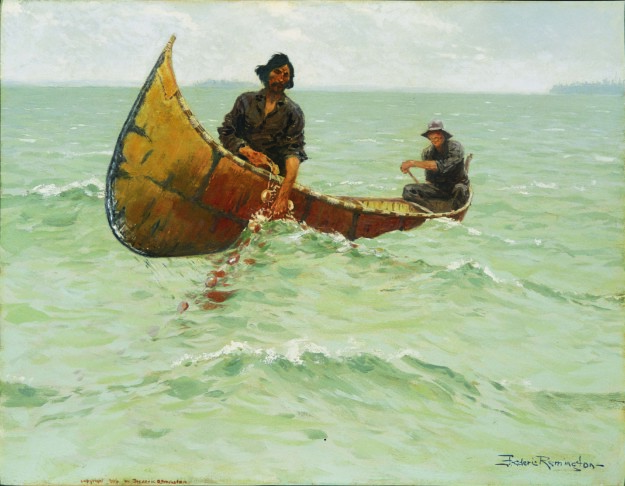
Frederic Remington | Hauling the Gill Net | ca. 1905 | Oil on canvas | Frederic Remington Art Museum, Ogdensburg, NY
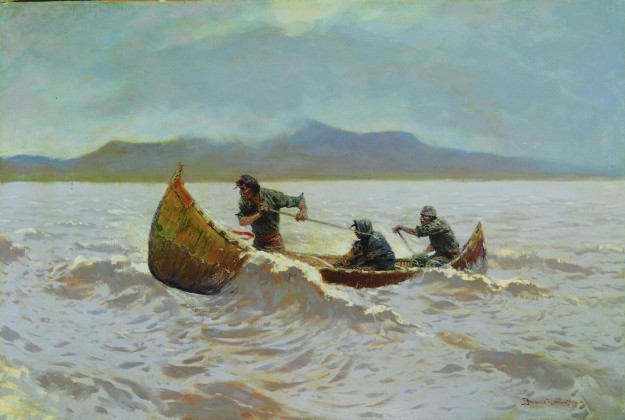
Frederic Remington | The Howl of the Weather | ca. 1905 | Oil on canvas | Frederic Remington Art Museum, Ogdensburg, NY
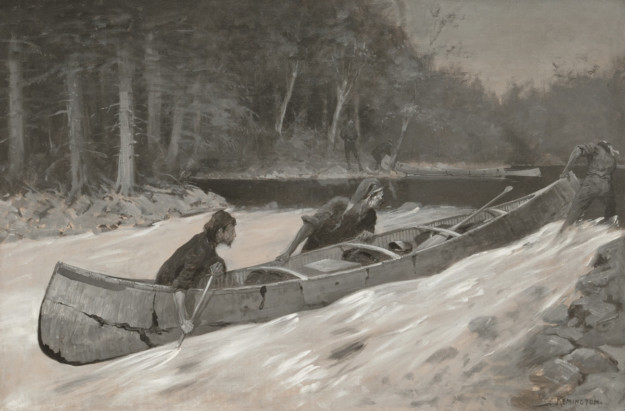
Frederic Remington | In a Stiff Current | 1892 | Oil (black & white) on canvas | 24 inches x 36 inches
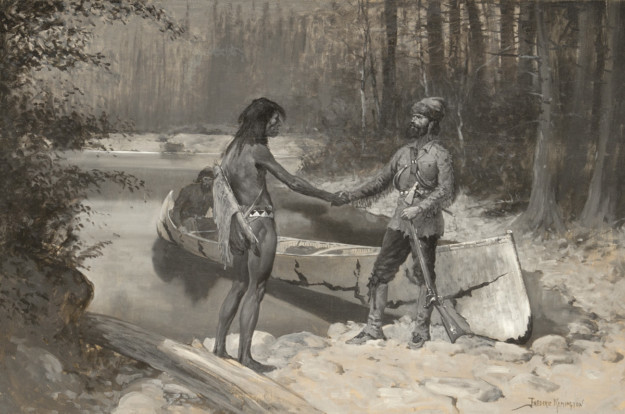
Frederic Remington | The Courrier du Bois and the Savage | 1891 | Oil (black & white) on canvas | 23 7/8 inches x 35 3/4 inches
Birch bark is the bark of a birch tree and has been used a building and writing material for thousands of years, and today remains a popular type of wood for various arts and crafts – and canoes.
So how do you build a birch bark canoe? With an amazing amount of work. Here’s a very simplified version of the steps:
- Gather materials.
- Find a building site. – Bark canoes were traditionally built outdoors, with stakes driven into the ground forming the overhead view of the canoe.
- Form the gunwales. – Gunwales are the top edges of the sides of a boat.
- Cut the bark and place within the boat’s frame.
- Shape the stems. – These form the profile of the canoe’s bow and stern.
- Sew the bark to the stems with roots.
- Build the ribs. – Soak the cedar logs in boiling water for pliability, then wedge the ends of the curved ribs inside the gunwales.
- Seal. – Seal any seams in the bark with a heated mixture of spruce gum and animal fat.
Want to see the process in action? I highly recommend watching this 1971 documentary, which follows César Newashish, a 67-year-old Atikamekw of the Manawan Reserve north of Montreal, as he builds a birch bark canoe the traditional way. Although the film is without commentary, viewers will find it mesmerizing and almost meditative to watch.



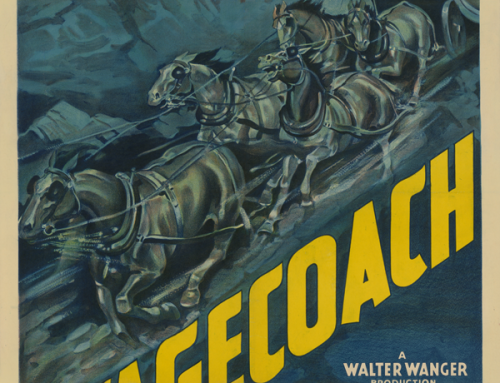
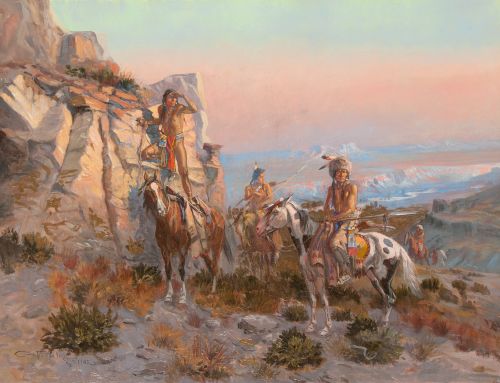
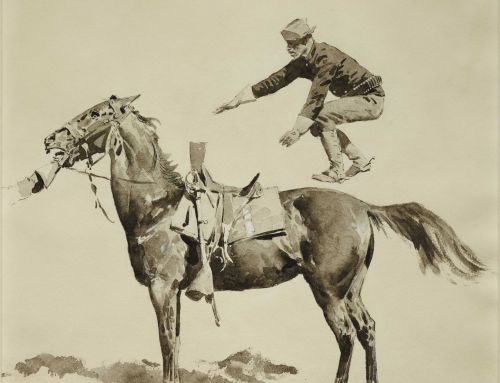
Leave A Comment